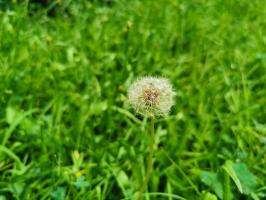How to Propagate a Rubber Plant
Rubber plants, scientifically known as Ficus elastica, are popular houseplants due to their attractive foliage and ease of care. If you have a rubber plant at home and want to propagate it to create more plants, there are several methods you can try. In this article, we will discuss how to propagate a rubber plant.
Propagating a rubber plant from stem cuttings
One of the easiest and most common ways to propagate a rubber plant is by taking stem cuttings. Here's how to do it:
1. Choose a stem that is at least 6 inches long and has healthy leaves.
2. Use a sharp, clean pair of pruning shears to make a clean cut just below a leaf node. A leaf node is the spot where a leaf is attached to the stem.
3. Remove the bottom leaves from the stem cutting, leaving only the top few leaves intact.
4. Dip the cut end of the stem in rooting hormone powder to promote faster root growth.
5. Plant the stem cutting in a pot filled with moist potting soil.
6. Water the cutting thoroughly and cover the pot with a plastic bag to create a greenhouse effect.
7. Place the pot in a bright but indirect light location, and keep the soil moist but not waterlogged.
8. After a few weeks, roots should start to form, and you can remove the plastic bag.
9. Once the new rubber plant has established roots, you can transplant it into a larger pot filled with fresh potting soil.
Propagating a rubber plant by air layering
Another way to propagate a rubber plant is by air layering. This method involves creating a new plant while the stem is still attached to the parent plant. Here's how:
1. Choose a healthy stem on the parent plant and wrap several layers of moist sphagnum moss around it.
2. Wrap plastic wrap around the moss to hold it in place.
3. Over time, roots will start to grow into the moss.
4. Once the roots are well-established, cut the stem below the moss and pot it up in fresh potting soil.
Propagating a rubber plant by division
If your rubber plant has grown too large for its current container, you can propagate it by dividing the plant. Here's how to do it:
1. Gently remove the rubber plant from its pot.
2. Use a clean, sharp knife to divide the plant into smaller sections, making sure each section has plenty of roots attached.
3. Fill several pots with fresh potting soil and plant each section in its own pot.
4. Water the new plants well and place them in a bright but indirect light location.
5. Keep the soil moist but not waterlogged, and wait for new growth to appear.
Propagation tips
No matter which propagation method you choose, there are a few tips that will help ensure success:
- Take cuttings or divide the plant in the early spring or summer when the plant is actively growing.
- Use a good quality potting soil that drains well.
- Keep the soil moist but not waterlogged.
- Provide the new plants with bright but indirect light.
- Avoid direct sunlight, which can scorch the leaves.
In conclusion, propagating a rubber plant is a fun and rewarding way to create new plants for your home or to share with friends. Whether you choose to propagate by stem cuttings, air layering or division, with a little patience and care, you can easily grow new rubber plants.

 how many times do yo...
how many times do yo... how many planted tre...
how many planted tre... how many pine trees ...
how many pine trees ... how many pecan trees...
how many pecan trees... how many plants comp...
how many plants comp... how many plants can ...
how many plants can ... how many plants and ...
how many plants and ... how many pepper plan...
how many pepper plan...
































